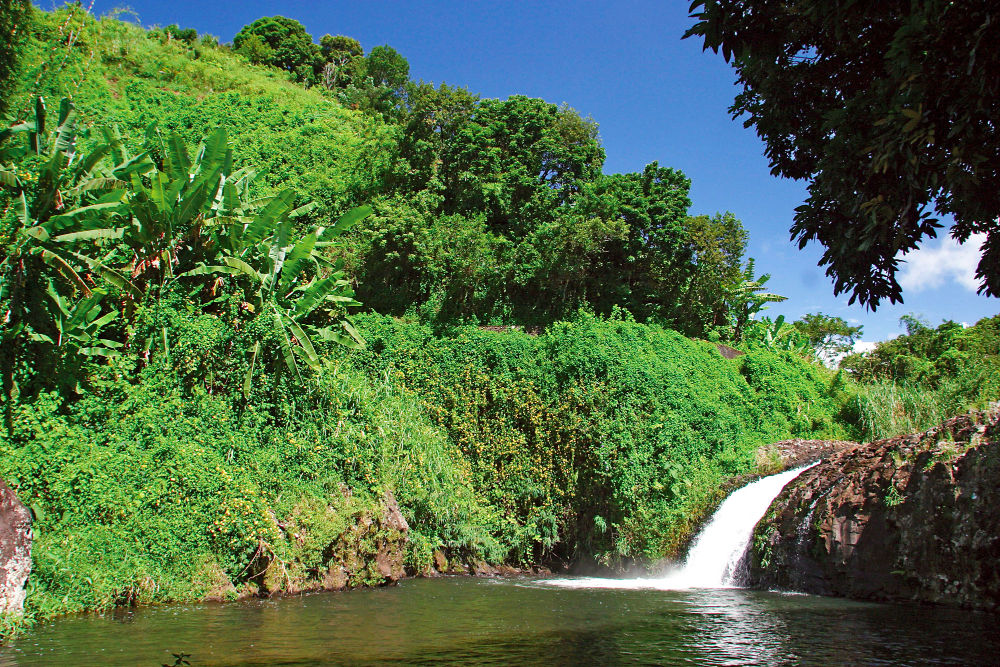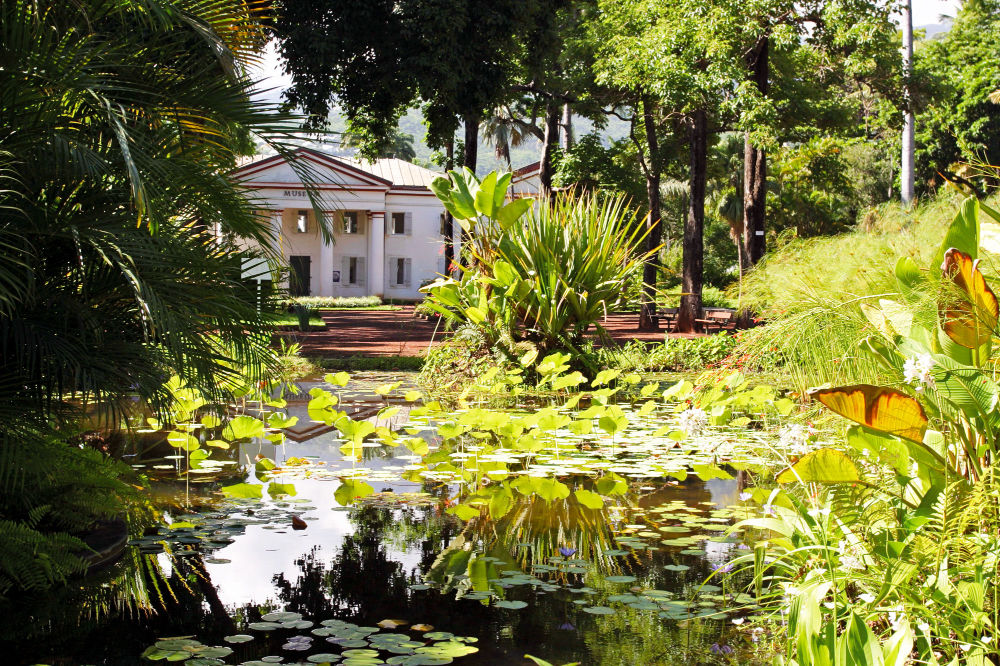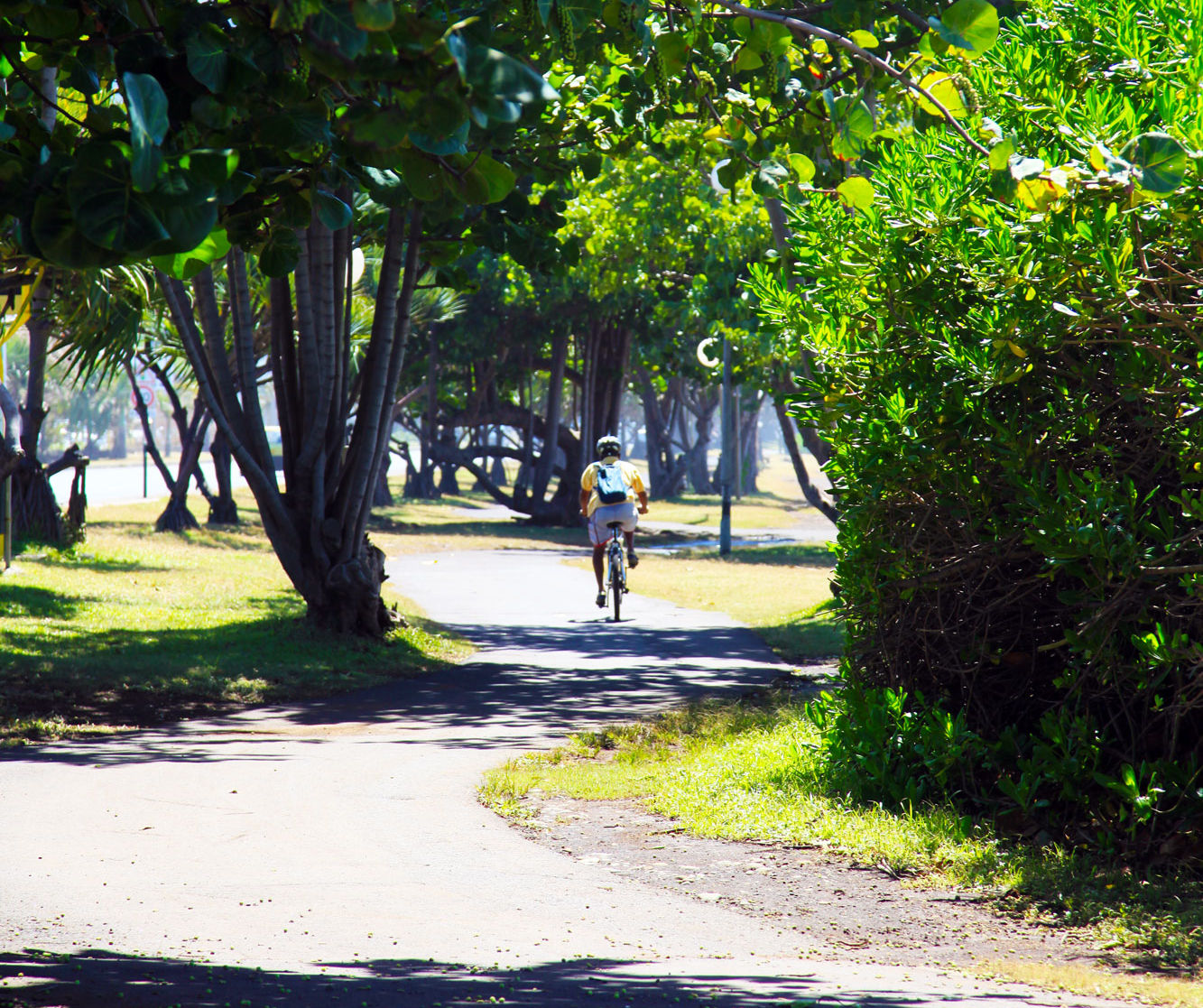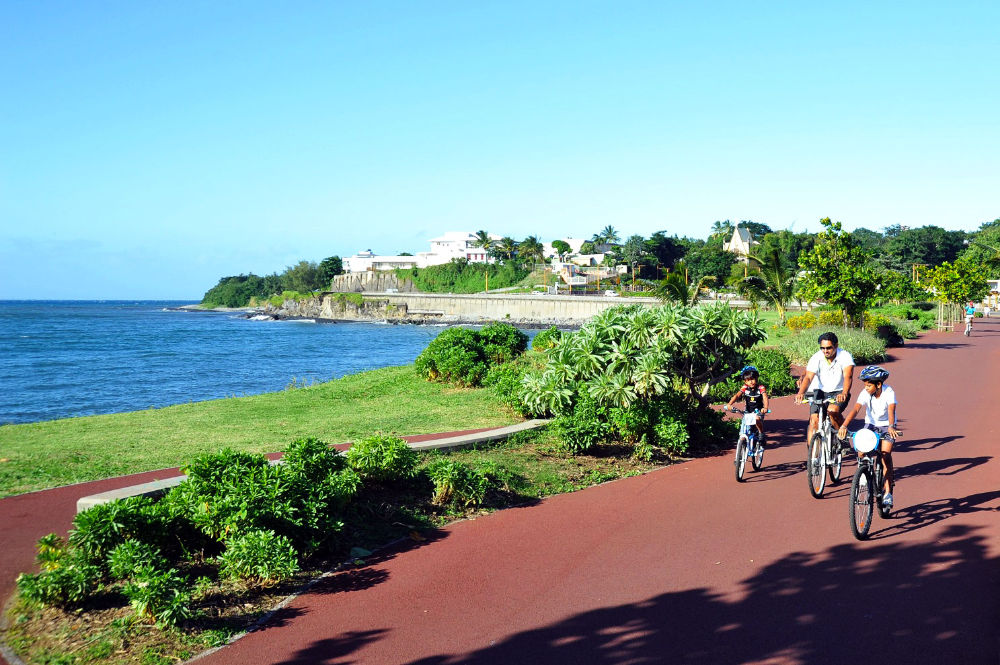This shady path, which takes no more than twenty minutes to complete, will plunge you into a discreet, deep and authentic Réunion Island.

Cascade Délices
On the road to Sainte-Suzanne, a sign with a promising name will probably catch your eye: "la cascade délices". Take the time to make the diversions into the little-known Quartier Français district, which has remained authentic despite the rampant urbanisation of the surrounding area. The access road passes the Sainte-Vivienne church and then the Sainte-Suzanne Ashram. Park your vehicle and take the cast-iron footbridge over the Petite Rivière Saint-Jean.
The shady path winds under badam trees, Bouchon berries and Bois Noirs. This last tree is nicknamed "Mother-in-Law's Tree" because its pods, when dry, rustle in the wind like the chatter of old women.
On either side of the path, you will discover the houses with their traditional Creole courtyards. A dozen or so Reunionese families enjoy the serenity and beauty of this little-visited natural site. You may even have the chance to meet the schoolchildren who walk the shady path to the Cascade Délices every day, or sample the letchis and longanis that are so abundant here.
As you continue your walk, a gap in the vegetation offers a view of the ocean, with sugar cane fields and part of the national road in the foreground, and the Bois Rouge factory and a Tamil temple in the background.
Near the pool, you'll notice the peculiar shape of the ground around the waterfall: the basalt has crystallised into prisms to form basaltic organs. This geological phenomenon is even more impressive at Bassin la Paix in St-Benoît. The Cascade Délices is perfect for epicureans, those who appreciate the simple things in life. Its waterfall, ridiculously small compared to the other waterfalls in Sainte-Suzanne, nevertheless offers incomparable serenity.
As you stroll through the streets of the town, one of the most striking features is the abundance of plants on every street corner, behind every gate, overhanging low walls and obstructing alleys.

Jardin de l'Etat in Saint Denis
On the famous Rue de Paris, the trees can easily reach 20 metres in height. Their reassuring presence adds to the quality of everyday life, providing welcome shade for both locals and tourists, who often walk along this major thoroughfare from the Barachois to the Jardin de l'Etat. The junction between Rue de Paris and Rue Monseigneur de Beaumont is a perfect illustration of this feeling. Two majestic trees face the Jardin de l'Evêché, itself generously planted.
In the town centre, multicoloured bougainvilleas stand out from the low walls of private properties to light up the pavements. And behind every slightly openwork gate, you'll find either well-designed paths, with a fountain if you please, or an inextricable jumble of vegetation to which only the lucky owner has the key. See for yourself at no. 42 Rue Labourdonnais (Maison Kichenin, listed as a Historic Monument) for an example of a Creole house with a well-ordered garden, and then at no. 183 Rue Jean Chatel for an example of a typical Creole garden, exuberant and overflowing with love.
This path runs along the coast from Saint-Denis to Sainte-Suzanne, and owes its continuity to the many bridges and footbridges that have been totally integrated into the landscape. The skeleton of the former railway station at Saint-Denis and Sainte-Suzanne, or the tunnel that passes under the Bel Air lighthouse, with the Tamil temples along the way, offer a glimpse into the island's historic past. Walkers, joggers and cyclists will enjoy the changing landscapes that follow one another, under the benevolent gaze of the ocean. To cover the entire 21-kilometre North Coastal Path, allow 5 hours' walk at a leisurely pace, or 2 to 3 hours by bike.

North Coast Path
In Saint-Denis, the coastal path crosses the Parc des Tamarins and its centuries-old black woods offer a green, very green space right next to the main road, yet protected from the noise of the road.
In Sainte-Marie, the old national road offers a wide stretch of rolling road used every day by fans of two-wheelers: bikes, scooters, segways, etc. The esplanade where the local fairground market is held is a thing of beauty, with the blue of the ocean on one side and the green of the trees on the other. The Notre Dame de la Salette chapel towers above it all in its dazzling whiteness.

Old national road to Sainte Marie
Located downstream from the church of Notre-Dame de l'Assomption, the chapel of Notre-Dame de la Salette was listed as a historic monument in 2012. It was originally a simple oratory founded by Father Scubillon in 1856. It was rebuilt between 1894 and 1897, then modified and enlarged in 1949 in a neo-Gothic style. You'll be amazed by its gabled-wall façade flanked by two massive carved basalt pilasters. Under the steeply pitched roof, a niche houses a statue of the Virgin Mary that once belonged to Father Scubillon. The stained glass windows were made in 1961.
In Sainte-Suzanne, this path winds around the Pointe de Bel Air between two walls of vegetation. In the past, our Ti Train used to use this path. Today, the carambola trees have invaded the area, forming a natural tunnel with a beautiful effect. Further on, you pass through the (real) railway tunnel. It's an unusual sensation, and a real change of scenery.
The Communauté intercommunale du nord de la Réunion (CINOR) has organised three educational stops along the coastal pathway in each of the communes of the Northern Region to raise awareness of the importance of sorting waste. Fifteen panels are set up along the route. Questions are asked on the panels and the answer is found at the next stage. The sorting trail is designed to be fun for all the family.